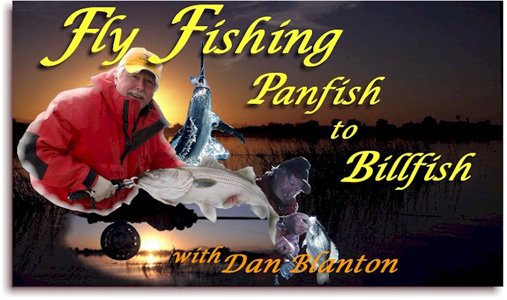 |
 |
| The entire fly is tied using the forward half of the hook shank only. Wrap thread to mid-way point and center 10 wraps of lead wire on top of the thread. wrap over the wire and cement. |
Tie in a medium bunch of white bucktail 3-1/2 to 4- inches long at mid-point of the hook shank. Trim stubs to form a neat, tapered foundation. All of the material tied on from this point on will help to build the foundation over which the head of the fly will be formed later. Now tie directly on top of tail, 15 – to 20- strands each of both silver and pearl Flashabou – leave it long, it will later be cut about 1/2-inch longer than the wing to form a flash tail. |
 |
 |
| Tie on three, long, white saddle hackles, curved sides inward, slightly tented over the tail, along each side, forming the wing which simulates the body of a baitfish. Now tie on the underside of the hook (throat), a medium bunch of white bucktail, half the length of the tail, which forms the belly of the fly, giving it some girth. |
Tie in a medium bunch of pearl gray bucktail for topping, producing back color. You now tie in along both sides where the gray bucktail meets the white saddles, a shoulder of mauve or hot pink (cerise) bucktail, as long as the gray bucktail. Over that, add six to eight strands of wine Crystal flash. Add side flash, a combination of 15 to 20 strands each of both silver Flashabou and multi-colored Crystal flash. It is preferred to layer the silver flash, about half-to-half. The Crystal flash needn’t be as long as the wing. |
 |
 |
| Tie in along each side as an over-shoulder, one long grizzly saddle hackle just short of tail-length. Now tie in a loop of medium gray chenille which will later be brought forward, nymph-case style, to form the head topping. Next, take two to three turns of small, red chenille at the same point the loop is tied in and tie off. This will simulate gills. |
Starting just back of the hook eye, tie in a length of small, white chenille and wrap to the red chenille and back (two layers) and tie off. Bring gray chenille loop over the top and tie it off, forming a small, neat tie-off point. Cement. |







